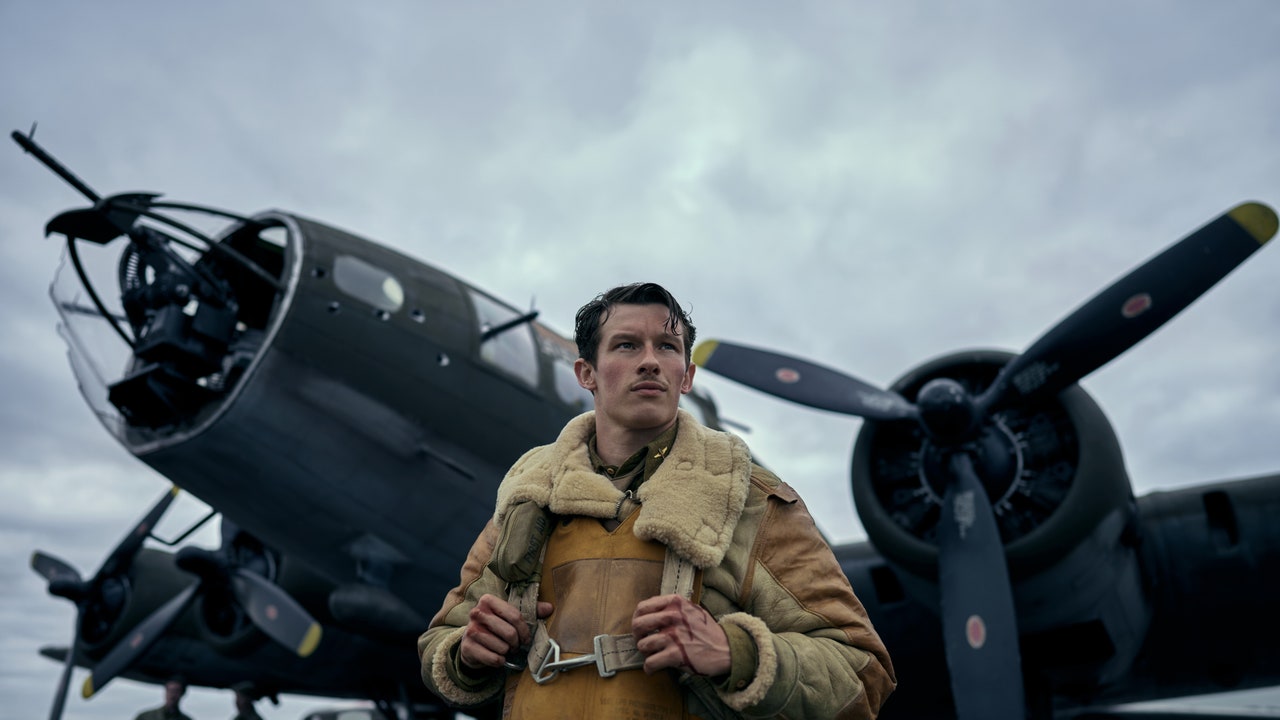[ad_1]
When HBO’s WWII drama Band of Brothers premiered in 2001, it was a distinct event. Such a glossy, massive-scale mini-series appearing on television was quite rare at the time, if not unprecedented. Unlike its broadcast network brethren, Band of Brothers, produced by Tom Hanks and Steven Spielberg, was longer (10 episodes) and loftier in its aims. It became something of a cultural phenomenon—one that honored a traditional American idea of Greatest Generation heroism, but that did not shy away from real horrors. The series helped alter the way television was perceived, right at the advent of a golden age. (Sex and the City and The Sopranos were only a few years old in 2001.)
By the time a follow-up series, The Pacific, arrived in 2010, we were steeped in a decade’s worth of more ambitious TV and the series seemed less remarkable; it was a respectable, intricately crafted show, though more brutal and less-misty eyed than its predecessor. For that reason, perhaps, The Pacific didn’t catch on in quite the same way that Brothers did. Which may then explain why the third installment of Spielberg and Hanks’s WWII project (or their fourth, if you include Saving Private Ryan), a bomber-pilot epic called Masters of the Air, has found a home on AppleTV+ rather than on HBO. The business has changed in the past 23 years, and maybe only pockets as deep as Apple’s can fund such a sweeping project.
The show is quite big, traversing land and sky as the airmen of the 100th Bomb Group pilot and crew B-17s over Europe, hitting key Nazi targets and suffering heavy casualties. The death toll is staggering on Masters of the Air—it’s disorienting, too. Like Band of Brothers, the new series attempts to tell a sprawling story through the eyes of two wartime friends: Austin Butler’s level-headed teetotaler Major Cleven and Callum Turner’s swaggering party boy Major Egan. (Which makes Butler the Damian Lewis equivalent, Turner the Ron Livingston.) But they’re often lost in the anonymous horde of goggles and helmets and other aviator gear. The series, created by John Shiban and John Orloff, is hard to track, especially as characters are picked off in such sudden, frequent fashion.
Perhaps this is not a fair complaint about a show that is, after all, trying to illustrate just how frightfully perilous this facet of the war really was. It is partly the point that we get attached to certain characters on the ground and then lose them in the high-altitude shuffle, only to find out that it was their plane we saw destroyed in one of the show’s many harrowing bombing scenes. The overall scope of that loss is certainly intellectually felt, but Masters of the Air doesn’t stir the same sentiment that Brothers did so effectively. We are more in awe of the terrifying whole of the thing than invested in individual lives.
That awe is enough to keep the series grimly compelling. Each episode—directed by Cary Joji Fukunaga, Dee Rees, Anna Boden and Ryan Fleck, among others—features some scary sequence, these impossibly young men flying hastily made (and even more hastily repaired) contraptions into bursts of flak explosions and swarms of Luftwaffe fighters. (They flew daytime missions, making their job exponentially more dangerous.) Death comes quickly and inevitably, and yet those still airworthy keep droning on toward their destinations, either staggeringly brave or hardened into a kind of fatalist blankness. Again and again they take to the sky, that horrible repetition never inuring us in the audience. It’s awful every time.
Other things happen on the show; terrible scrapes behind enemy lines, conflicts in POW camps, the Tuskegee Airmen get an episode-long showcase. It’s grave and exciting, a careful balance that is a hallmark of these series. One could argue that any such depiction of war inherently valorizes it, but Masters of the Air and its ilk are at least less leering, less ginned-up than lesser efforts like Midway or Fury.
It helps to have such solid performances from Butler, Turner, and others anchoring the series. Anthony Boyle, of Harry Potter and the Cursed Child stage fame, narrates throughout as Major Crosby, a more sensitive soul who gradually finds his mettle in the din of war. He helps ground the show in specific humanity; he makes distinct at least one leather-jacket clad guy flying into hell each day. (Barry Keoghan also appears on the series, doing an amusing Brooklynese.)
Masters of the Air trades the relative verité of its forebears for a more painterly look. While the air combat scenes feel bracingly real, the series is overall kissed by more Hollywood glow than is perhaps appropriate. Its lush, saturated hues lend the show a staginess, a green-screen surreality that doesn’t sync with the mechanical terror of its most gripping set pieces.
Still, fans of the past two series will no doubt find value, even of the slightly guilty entertainment sort, in Masters of the Air. It’s vivid and dreadful and moving where it counts, this at once dense and scattered series about barely post-adolescents hurling themselves into a sky-bound hell. What’s made plain by the show is the boggling miracle that anyone survived—as much a testament to crazy luck as anything else. These boys were trained and capable, sure. But anyone making it out of one of these raids alive seems like mere cosmic accident rather than mastery of anything.
[ad_2]
Source link

